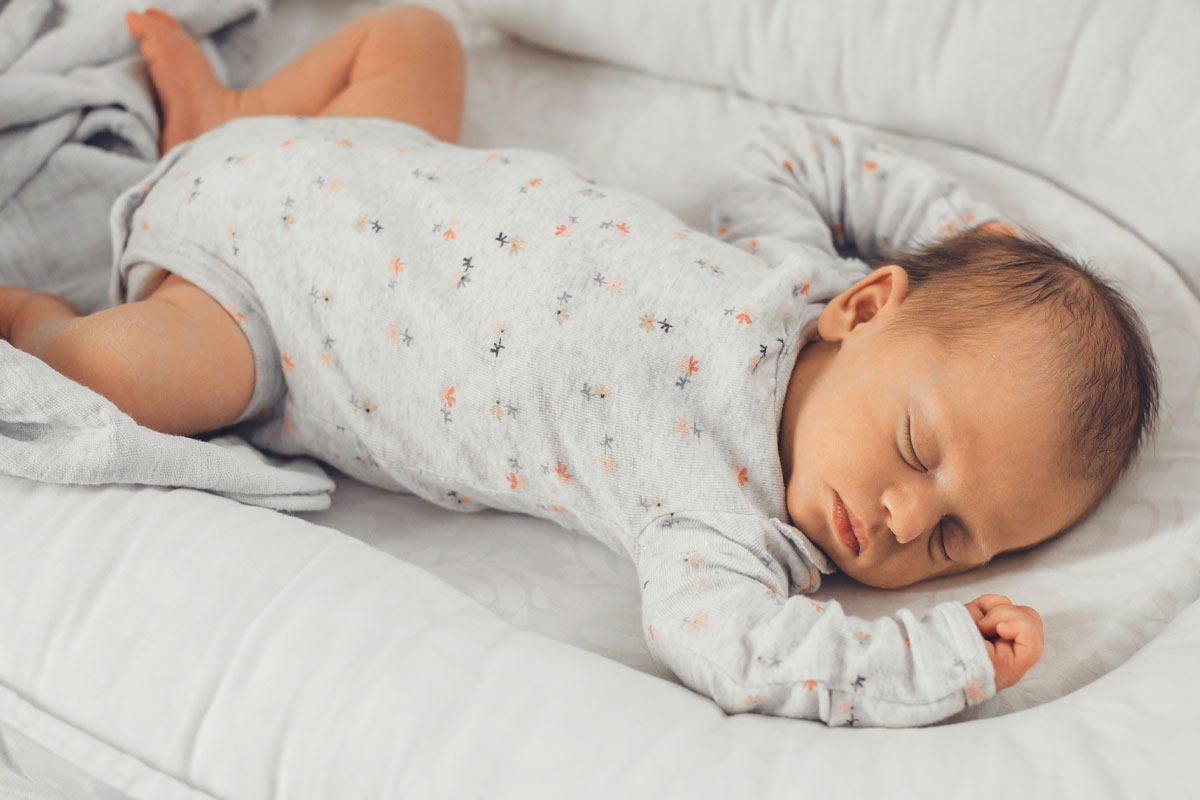Each month, this series will provide important facts and tips surrounding child safety in an effort to support parents and caregivers as they navigate reducing risks and creating the safest environment possible for the children in their lives.
Many new parents share that they are most concerned with their baby’s health and safety when it comes to sleep. This fear isn’t necessarily unwarranted considering that, statistically speaking, newborns sleep for an average of 16 to 17 hours daily, or approximately 70% of their day. That’s a lot of time for unnecessary worry to take over, so let’s make sure you know exactly how to create a safe sleep environment.
This month, we’re sharing helpful tips from trusted pediatric authorities and safety organizations to help give you the education and assurance you need to avoid any unsafe sleep practices with the littlest ones in your life.
Understanding the Importance of Sleep Safety
Thanks to the American Academy of Pediatrics (AAP), safe sleep recommendations and initiation of the Safe to Sleep® campaign in 1994, there has been a decline in both SIDS (sudden infant death syndrome) and sleep-related injuries and deaths for newborns and infants. Even with these resources updating their data and safety recommendations each year, there are still unfortunate accidents that occur. In 2020, there were 905 infant deaths reported due to accidental suffocation and strangulation in bed. The most difficult part of these tragedies to stomach is that a large number could have been avoided following safe sleep recommendations.
Safe Sleep Environment
Based on evidence, the AAP doesn’t recommend bed sharing with your baby under any circumstances – including for twins and multiples. Important to note that the risk of sleep-related infant death is 67 times higher when infants sleep with someone on a couch, soft armchair or cushion. All sleeping arrangements should be made away from windows to avoid cords or strings that could lead to strangulation. Avoid low hanging mobiles that may be too close and pose a risk. Utilizing safe sleep products, such as swaddles and sleep sacks, up until their appropriate recommended milestones help keep babies warm and comfortable. Finally, the AAP recommends keeping the baby’s crib, bassinet or pack-n-play in the parent’s bedroom for the first six months.
Appropriate Bassinets & Cribs
When picking out sleep options for your baby, always opt for cribs, bassinets or play yards that meet the current safety standards as these do in fact get updated over time. Second hand options can be so helpful when you’re on a budget, but always look to see if there have been any product recalls or safety updates. Baby needs a firm mattress to keep him or her supported, and the baby should always be placed on his or her back to sleep. Ensure the crib mattress fits snugly with no gaps to prevent suffocation or entrapment hazards, as well as being sturdy without falling over easily or sloping. Avoid using overly soft bedding, pillows, blankets or stuffed animals in the sleep area as these can wait for the toddler years.
Car Seat & Infant Carriers
Taking your little one on trips to the pediatrician or a nice stroller walk? Always have a federally approved car seat installed, preferably one you can confirm has never been in an accident previously or had any recalls. If you are unsure, have a certified car seat specialist check that you have correctly installed your car seat in your vehicle. (Some local firehouses provide this service.) Infants should be rear-facing in the backseat until two years old or they reach weight and height requirements provided by the manufacturer. Never use aftermarket add ons that were not originally made for your car seat as these can impede safety in the event of an accident. The AAP reminds parents, “If your baby falls asleep in a car seat, stroller, swing, infant carrier or sling, you should move them to a firm sleep surface on their back as soon as possible.”
Communication & Accountability
Keeping all caregivers accountable to stick to safe sleep guidelines for your infant may feel uncomfortable at times, but it is critical. Remember that not all adults view “safe sleep” the same. You want to be clear and consistent about the guidelines you’ve set for safe sleep and regularly check in to ensure they follow what you’ve asked. Don’t be intimidated to address any concerns or misconceptions they may have. At the end of the day, you are your baby’s biggest advocate. Even from one parent to another, keep each other accountable and gently remind a sleep deprived parent to follow your safe sleep guidelines when it seems like they may forget something.
Taking Action if Injury or Accidents Occur
Speak with your pediatrician if you have questions or concerns about the safety of your baby’s sleep environment. When possible, have all immediate caregivers get infant CPR certified in case of an emergency. Always have a first aid kit nearby as well as any important documents or phone numbers for contact information for pediatricians and emergency contacts. If you are unsure about the severity or care of an injury but have concern, don’t wait to head to your nearest emergency room or call 911.
Helpful Resources to Learn More
American Academy of Pediatrics – aap.org



















